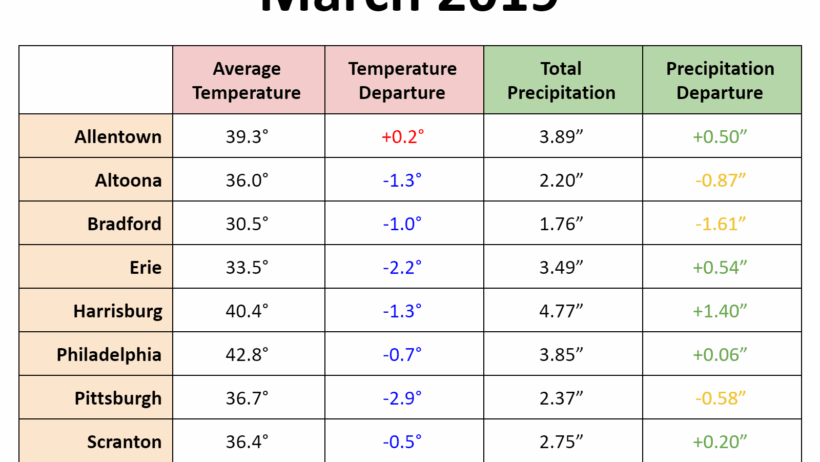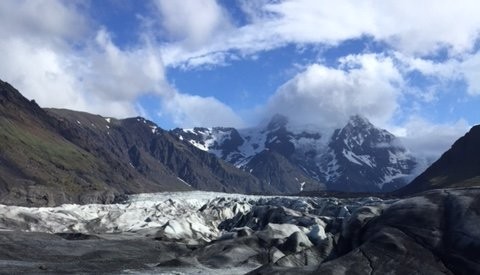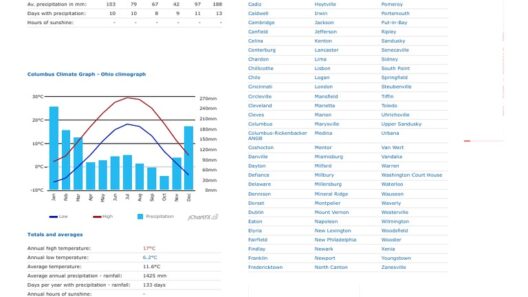Pennsylvania, commonly characterized by its diverse topography and sprawling landscapes, exhibits a climate markedly influenced by its geographic location. Nestled in the northeastern United States, the Keystone State experiences the vagaries of four distinct seasons. Each season brings its own characteristics, unraveling a tapestry of weather patterns that not only shape the environment but also impact the daily lives of its inhabitants.
Exploring the Seasons
With a climate classification predominantly classified as humid continental, Pennsylvania showcases a mosaic of seasonal shifts. The seasonal transitions, from the revelry of vibrant autumn leaves to the somber, stark quietude of winter, captivate both residents and visitors. The interplay of the changing seasons offers a plethora of outdoor activities and experiences, fostering a deeper appreciation for nature’s cyclical rhythm.
Spring – A Rebirth
As winter wanes, Pennsylvania welcomes spring, heralding an era of rejuvenation. March, April, and May are generally marked by fluctuating temperatures, as if nature herself is indecisive in her transformation. Early spring can oscillate between cool, crisp days and unseasonably warm spells. The average temperatures in March hover around the mid-40s°F, slowly ascending to the mid-60s°F by May. This variability creates an encouraging climate for flora to reawaken from their winter slumber.
Spring rains are frequent, instilling vitality in the landscape and nourishing the budding flora. The Pennsylvania countryside becomes an explosion of color, as wildflowers bloom and trees regain their lush canopies. This season also initiates critical ecological activities such as pollination, which play a pivotal role in sustaining biodiversity.
Summer – The Warmth Unleashed
Summer arrives in Pennsylvania with balmy temperatures and longer daylight hours, transforming the state into a vibrant playground. June, July, and August typically showcase highs reaching into the 80s°F and even into the low 90s°F during peak heat waves. This sultry season encompasses increased humidity, particularly in the eastern regions, and prompts a shift in weather patterns, including occasional thunderstorms that can be intense but short-lived.
Interestingly, the Northeast receives an average of 30-40 inches of rain annually, predominantly in the summer months, contributing to Pennsylvania’s lush verdancy. Summer is the prime time for various outdoor activities, from hiking in the Appalachian Mountains to enjoying festivals and fairs. However, this season also serves as a stark reminder of climate change’s potential impacts, such as altered precipitation patterns. Hotter summers can exacerbate existing environmental issues, further emphasizing the urgency for sustainable practices.
Autumn – A Colorful Departure
As summer retreats, Pennsylvania’s autumn brings a majestic display of colors, with deciduous trees undergoing a dramatic metamorphosis. September through November sets the stage for one of the most picturesque times of the year, with temperatures beginning to drop from the 70s°F in September to the brisk 50s°F by November. The climatic shift creates a comfortable environment, making it a delightful period for outdoor exploration and festivities.
Autumn also introduces the harvest season, where agriculture thrives in full display. Corn mazes, apple picking, and pumpkin patches emerge, celebrating the bounty of the state’s rich farmland. Moreover, the gentle chill in the air serves as a precursor to the inevitable winter ahead.
Winter – A Time of Reflection
Winter, encompassing December through February, blankets Pennsylvania in its tranquil silence. Temperatures frequently dip below freezing, with average lows hovering around the 20s°F. Snowfall can range considerably across the state, from light flurries in the southeastern regions to substantial snow accumulations in the mountainous northwestern and northern areas. The snow-covered landscapes provide a stunning visual contrast to the dark, bare trees and promote winter sports, such as skiing and snowboarding.
Yet, winter’s harsh conditions pose challenges, including increased energy demands and risks associated with icy roads. It serves as a critical time for climate discussions, as communities contemplate strategies for resilience against increasingly erratic weather phenomena, including extreme cold snaps and unanticipated snowfall patterns.
Weather Patterns and Climate Change
The atmospheric dynamics in Pennsylvania are continuously evolving, necessitating a keen focus on weather patterns and their implications. Variability in precipitation and temperature poses significant implications for various ecosystems and human activities. Seasonal weather patterns such as El Niño and La Niña can lead to unpredictable outcomes, impacting agriculture, wildlife habitats, and natural resources.
Climate change amplifies these variances, resulting in more intense rainfall events, prolonged droughts, and fluctuating seasonal temperatures. As a state rich in agriculture and natural resources, Pennsylvania must address the multifaceted challenges posed by climate shifts. Sustainable land management practices, investment in renewable energy, and community education are indispensable in striving for a balance between human activities and environmental stewardship.
Conclusion – A Call to Action
Understanding Pennsylvania’s climate reveals an intricate landscape of seasonal wonder and ecological interdependence. As residents and advocates of our planet, it is imperative to adapt and respond proactively to the evolving weather patterns. The clarity of each season’s characteristics presents an opportunity. By harnessing this knowledge, communities can unite in sustainable practices that champion environmental health and resilience for future generations. As the world alters its trajectory amid climate transformations, Pennsylvania stands poised to lead in the call for action, fostering a deeper appreciation for the natural world and a commitment to its preservation.







